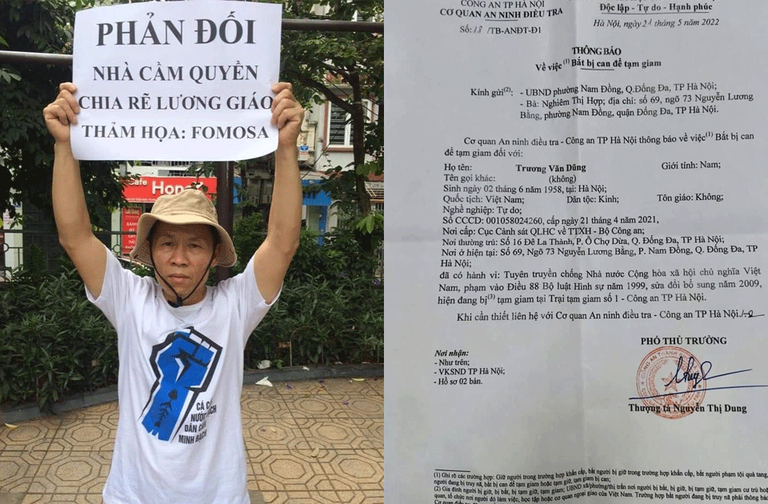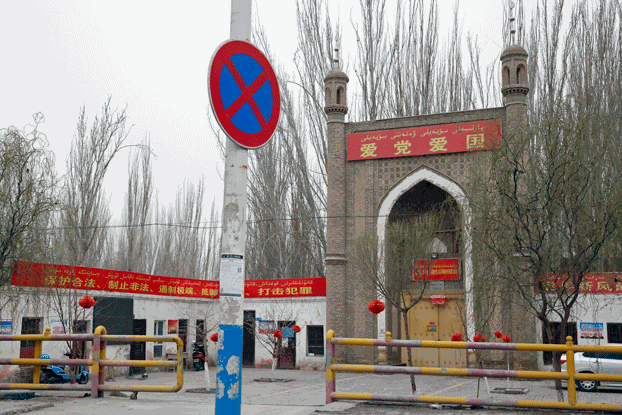Xinjiang goldsmith’s death after release from prison is followed by son’s demise
A Uyghur goldsmith died 20 days after being released from prison and his 20-year-old son died the next day at his funeral in northwestern China’s Xinjiang region, Chinese government officials said. Yaqup Hesen, 43, was released from prison in Ghulja (in Chinese, Yining) in April and died on May 1, the eve of the Eid al-Fitr holiday that marked the end of the Islamic fasting month of Ramadan. Bilal Yaqup, his son, died the following day, the sources said, confirming news about the pair that had circulated on social media. Despite China’s severe restrictions on online information, reports of the deaths of Uyghurs detained in prisons and internment camps in the Xinjiang Uyghur Autonomous Region (XUAR) have continued to circulate on Facebook and other platforms. Many of the videos and photos posted are of deceased Uyghurs who are under the age of 50 and had lost a significant amount of weight while incarcerated. A Facebook post about the father and son said Bilal collapsed and died while carrying his father’s casket at the businessman’s funeral. A resident from the neighborhood committee in the area of Ghulja where Hesen lived said many Uyghurs have died after being released from area prisons and camps, but she did not disclose their names. “There are many. I don’t know all their detailed identities,” she said. A neighborhood committee official where Hesen lived told RFA that he had been jailed for praying. He spent three years in prison and left unable to walk. “He lived in our neighborhood,” she said. “It’s been three years since he was sentenced to prison.” The committee official also confirmed that Bilal died the day after his father passed away. “I don’t know the reason for his death,” she said. Tursunjan, a Uyghur from Ghulja who now lives in Turkey and who knew Hesen, told RFA that he called people in the city after he had seen a social media post about the man’s death to find out if the information was accurate. His sources in Ghulja confirmed to him through gestures on a video call that the information about the father’s and son’s deaths was correct, he said. Tursunjan said he learned that Hesen was taken away in 2018 and was sentenced to prison a year later. He was released in critical condition in April about two to three weeks before Eid al-Fitr. “He was sentenced to prison three years ago. That’s what I heard,” he said. “After his death, I heard that he had been actually released from prison,” Tursunjan said. “He was pronounced dead on the eve of Eid.” Hesen’s and Bilal’s deaths spoiled a typically festive mood in the city during the Eid al-Fitr holiday, Tursunjan said. “He had a very good reputation in the city as an ethical and pious person,” said Tursunjan, who said he knows at least 40 people from Ghulja who are still in prison. Hospital treatment Another Uyghur from Ghulja who now lives abroad but requested anonymity for safety reasons, said municipal police, state security forces and a group of Chinese government officials from the XUAR attended Hesen’s funeral. One of the members of the group told RFA that Hesen died due to ineffective treatment for an illness and confirmed that Bilal passed away the day after Hesen died. “We heard he died, so we went [to the funeral],” the government official said. “We didn’t know what the cause of his death was.” Hesen’s family took him to hospitals in Ghulja and Urumqi (Wulumuqi), the Xinjiang Uyghur Autonomous Region (XUAR) capital for treatment, the Uyghur in exile who requested anonymity said. “The family tried hard to treat him in hospitals both in Ghulja and Urumqi, but all were ineffective,” he said. “His son fainted and died because of deep mourning about his father’s passing.” Chinese authorities have targeted and arrested numerous Uyghur businessmen, intellectuals, and cultural and religious figures in the XUAR for years as part of a campaign to monitor, control and assimilate members of the minority group purportedly to prevent religious extremism and terrorist activities. Many of them have been among the 1.8 million Uyghurs and other Turkic minorities believed to be held in a network of detention camps in Xinjiang since 2017. Beijing has said that the camps are vocational training centers and has denied widespread and documented allegations that it has mistreated Muslims living in Xinjiang. The United States and the legislatures in several Western countries have deemed the treatment of Uyghurs and others in the XUAR as constituting genocide and crimes against humanity. Translated by RFA’s Uyghur Service. Written in English by Roseanne Gerin.





